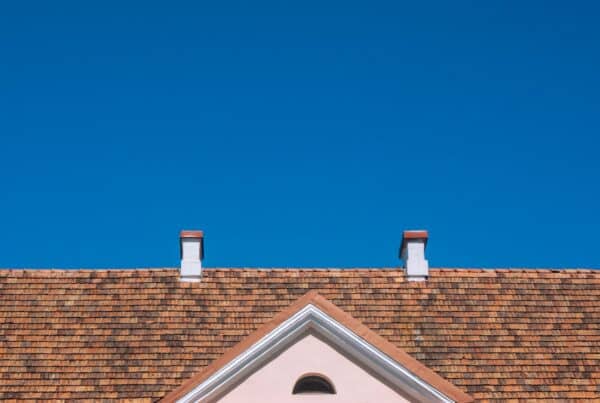
Every homeowner knows that a trusty roof overhead is essential for a safe and comfortable home. Beyond the shingles and sturdy beams lie the often-overlooked roof vents, which have the important job of maintaining a balance between indoor and outdoor air. Many homeowners choose to cover their roof vents – but are these caps necessary?
In this post, we’ll learn more about the anatomy of roof vents, weigh the true value of vent caps, and explore the potential risks involved in leaving vents uncapped.
Understanding Roof Vents
Roof vents are not the most glamorous feature of your home. However, their role is as crucial as the foundation supporting your walls. Nestled discreetly among the roofline, these vents quietly orchestrate the flow of air through your attic and living spaces.
Roof vents come in various shapes and sizes, each designed to serve a specific purpose. Whether it’s the boxy static vent that stands guard like a watchtower or the sleek ridge vents that run along the very spine of your roof, their mission is unified: to allow stale, warm air to escape from your attic. This helps regulate temperature and control moisture levels, which can become a breeding ground for mold and wood rot if left unchecked.
In the colder months, these vents are just as vital. They help to balance the temperature of your attic, preventing ice dams—ridges of ice that can form near gutters. Ice dams can cause water to back up under your shingles, leading to leaks and other damage.

Old Roof Cap in Need of Maintenance to Function Properly
The Purpose and Benefits of Roof Vent Caps
Understanding the indispensable role of roof vents, we now turn our gaze to the guardians of these critical airways: the roof caps. While they may appear to be mere accessories, roof caps serve a fundamental purpose in the overarching function of your home’s ventilation system.
The primary purpose of a roof cap is to shield the vent underneath. Like a well-designed umbrella, these caps create a barrier between the vent and the diverse elements that nature hurls its way. However, they also act as a first line of defense against water intrusion.
Without a cap, vents are vulnerable to driving rain or melting snow, which can seep into your attic, leading to dampness, mold, or even structural damage over time. Caps are designed to divert water away, ensuring the dryness and integrity of your attic space.
Additionally, roof caps prevent debris from clogging your ventilation system. Leaves, twigs, and even the odd rogue tennis ball can block vents, impeding airflow and compromising their efficiency. By keeping these obstructions at bay, caps maintain clear air passage which is essential for the health of your home.
Another significant benefit is the role caps play in deterring wildlife from taking up residence on your roof. Birds, squirrels, and insects often seek the warm refuge of an attic. Finally, roof caps are designed to encourage continuous airflow, which is vital for the energy efficiency of your home.
Potential Risks Without Roof Caps
Forgoing roof vent caps can lead to a range of issues that extend beyond the immediate and obvious, further underscoring their importance.
Uncapped vents expose roofing materials to constant wear from the elements, potentially speeding up wear and leading to premature replacements. In extreme weather, high winds can drive rain into vent openings, while heavy snow can melt and seep into the roof or house interior.
Open vents in wildfire-prone areas increase the risk of fire spreading to the house, as embers can enter and ignite flammable attic materials. Roof vent caps with mesh screens prevent ember entry while allowing free airflow.
Without caps, the attic and roof’s structural integrity can be compromised. Temperature fluctuations cause roofing materials to expand and contract, leading to cracks and gaps over time.
The absence of roof vent caps may also affect homeowners’ insurance and roof warranties. Policies or warranties may require adequate maintenance of all roofing system components to remain valid. Failing to install caps could be considered negligence, potentially leading to denied claims or voided warranties if damage occurs.

Recommended Maintenance
To complement the installation of roof caps, a holistic approach to roof maintenance is essential. Seasonal roof check-ups can reveal minor issues before they escalate. Clearing gutters and downspouts ensures proper water flow and prevents damage. Regularly trimming tree limbs deters debris accumulation and reduces wear on your roof.
Additionally, assessing attic insulation and ventilation contributes to climate control and moisture regulation, averting potential damage. Vigilance against pests in the attic is also crucial as they can cause unexpected harm. These maintenance practices safeguard the integrity of your roof and enhance its longevity.
When to Call a Professional
If you notice any signs of damage around your roof vents, it’s advisable to call in a professional. This can present as cracks, rust, or gaps where the vents connect with the roof. These issues can compromise the ventilation system’s efficiency and the roof’s overall weather-tightness.
If your vent caps show signs of wear, are visibly loose, or have been dislodged by strong winds or heavy debris, a professional should resecure or replace them to maintain their protective function. This is particularly important as improperly fitted caps can lead to water ingress and pest problems.
For persistent moisture issues such as condensation, mold growth, or rot, a professional can evaluate the current system. From there, they can provide solutions that may include upgrading or adding additional roof vents and caps. After extreme weather events, it’s wise to have a professional inspect your roof venting system. They can check for any subtle damages that might not be immediately apparent.
Conclusion
To sum it all up, vent caps play an indispensable role in preserving the health of your home, despite how well they fade into the background. They act as guards against water, debris, and unwanted critters, all while helping to maintain efficient airflow and prolong the life of your roof.
Ignoring roof vents and caps could leave your home exposed to a host of preventable issues, from leaks to pests. So, when assessing the well-being of your home from top to bottom, don’t overlook the small yet mighty roof vent cap—it’s a small investment that stands guard over your peace of mind, no matter what the skies may bring. For an inspection of your roof, vents, and any other component of your home, reach out to Boggs Inspection Services today.



